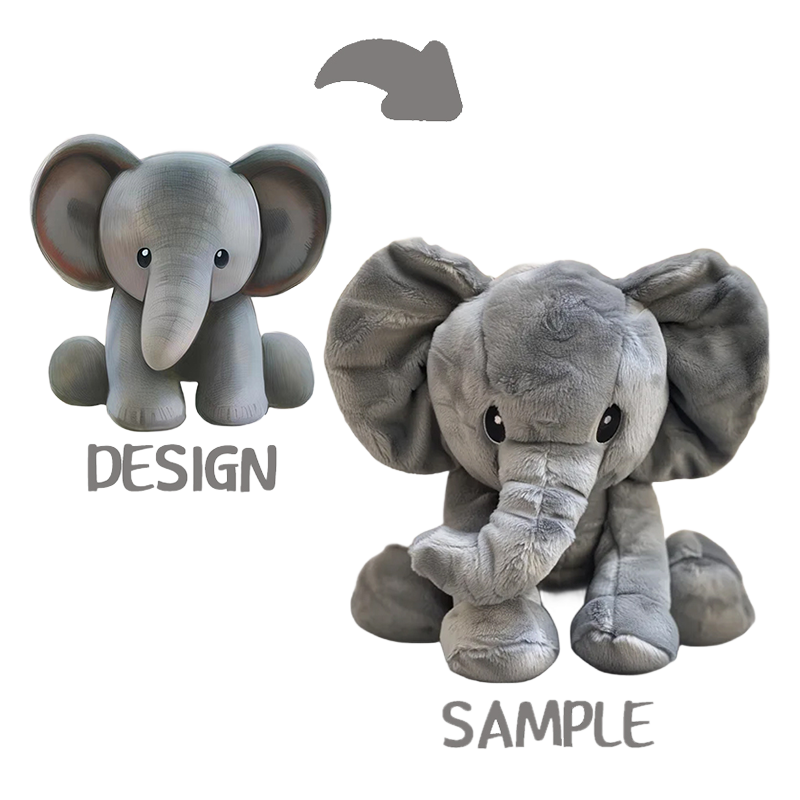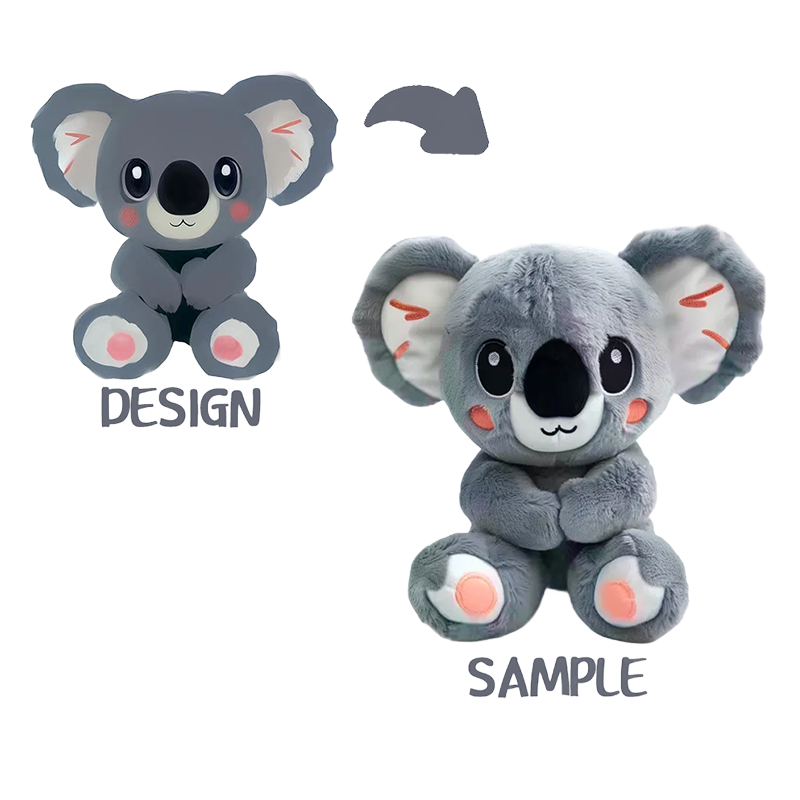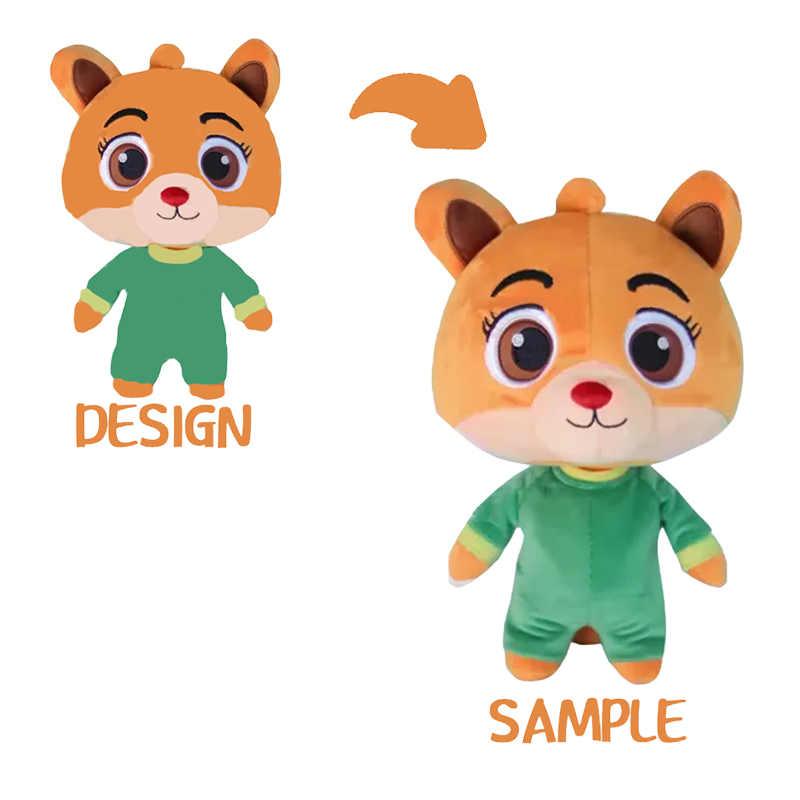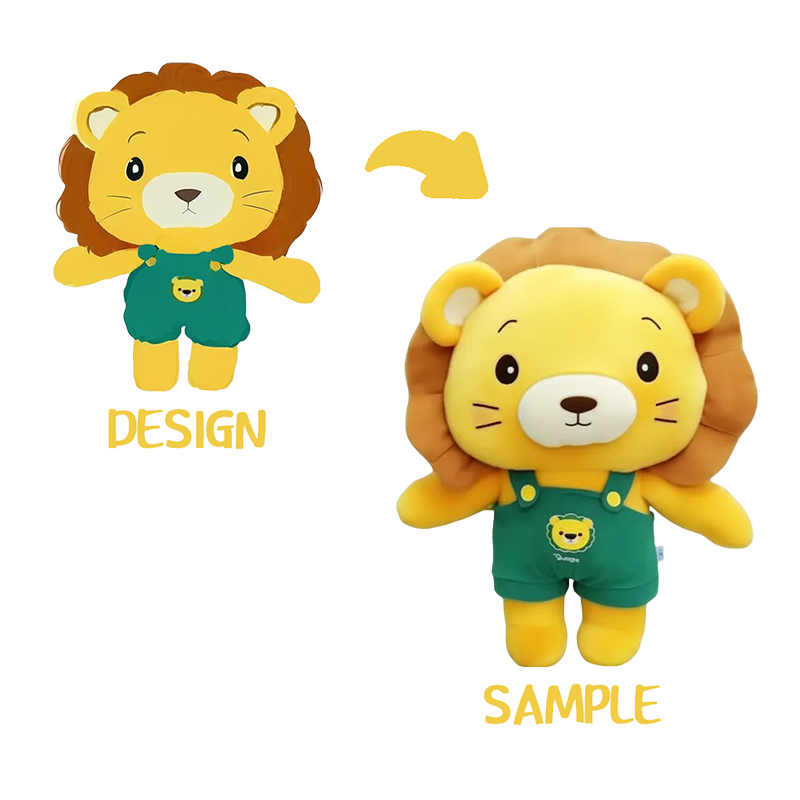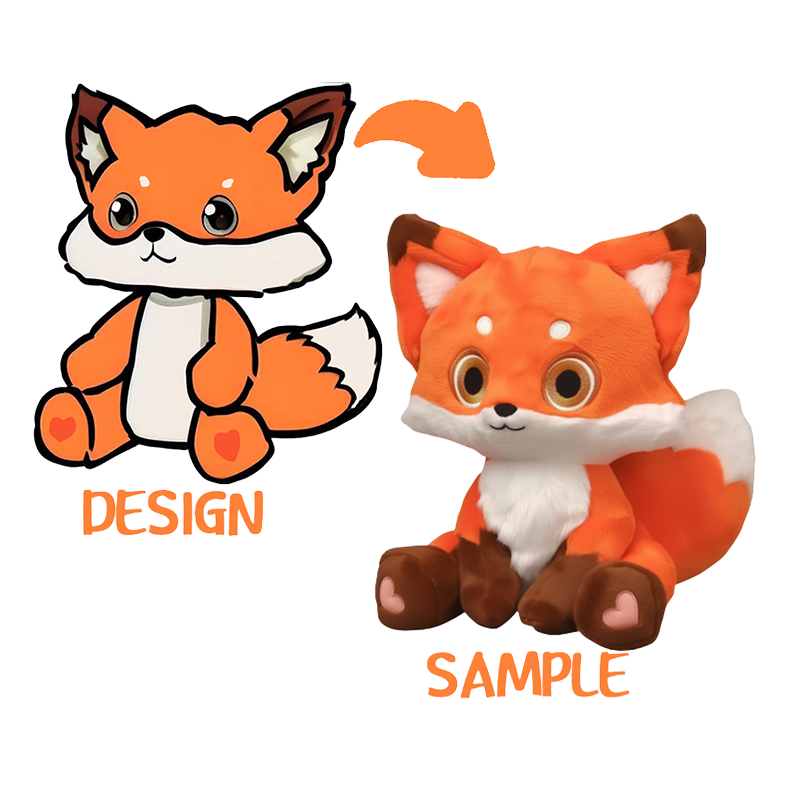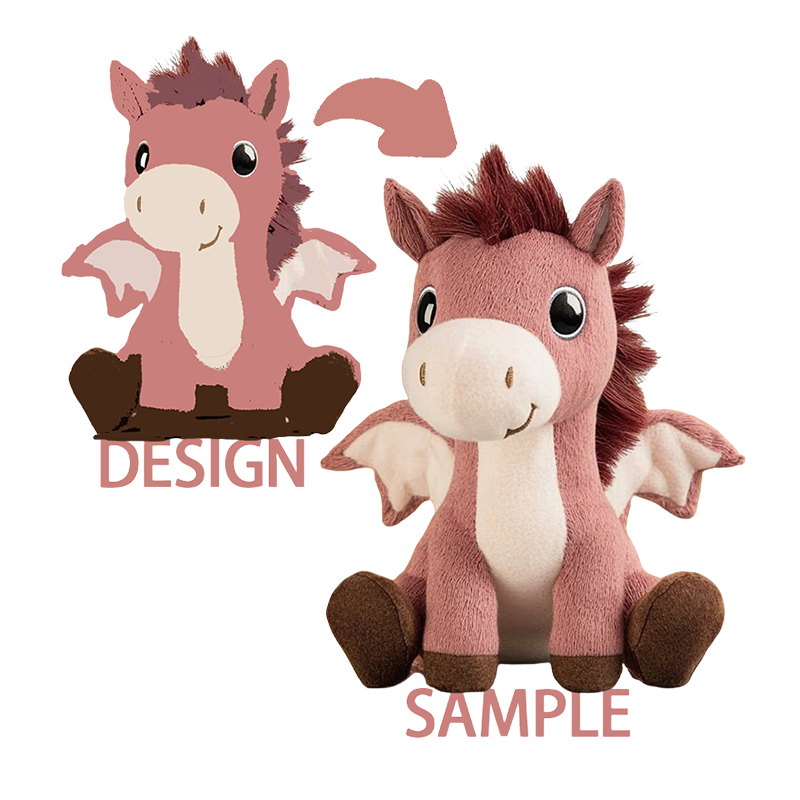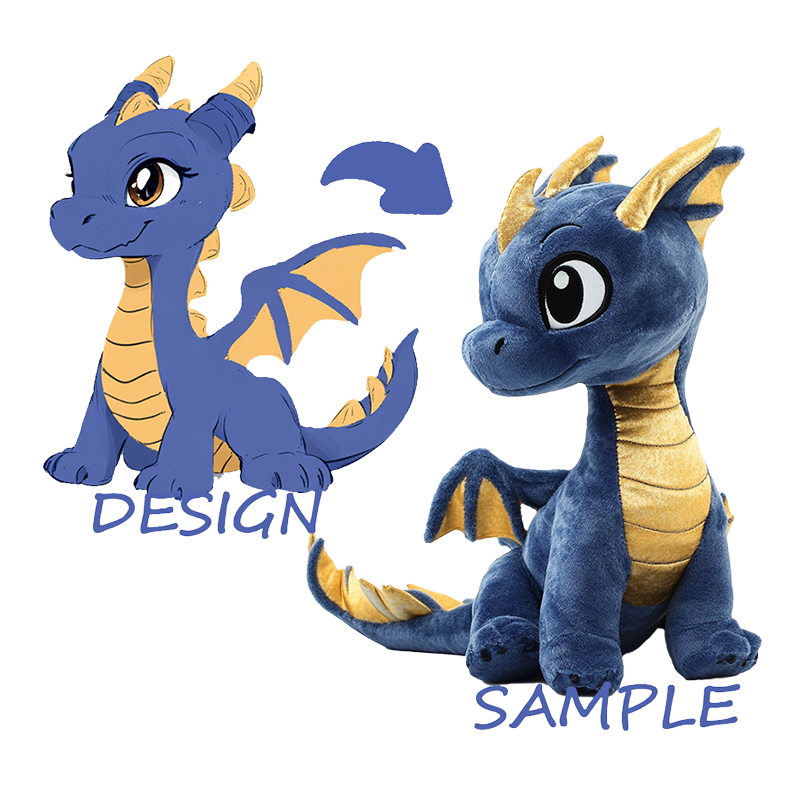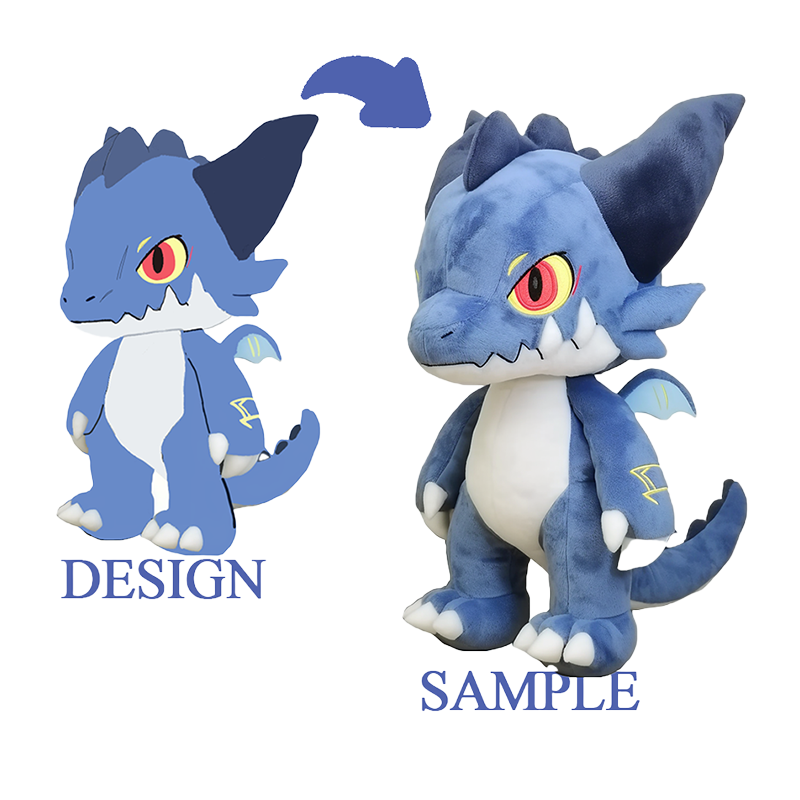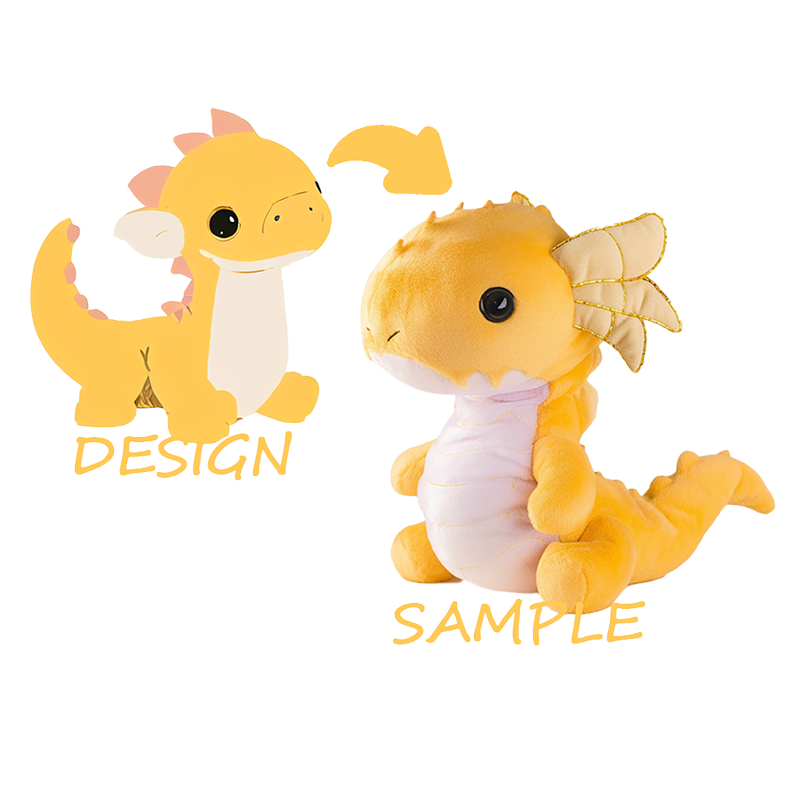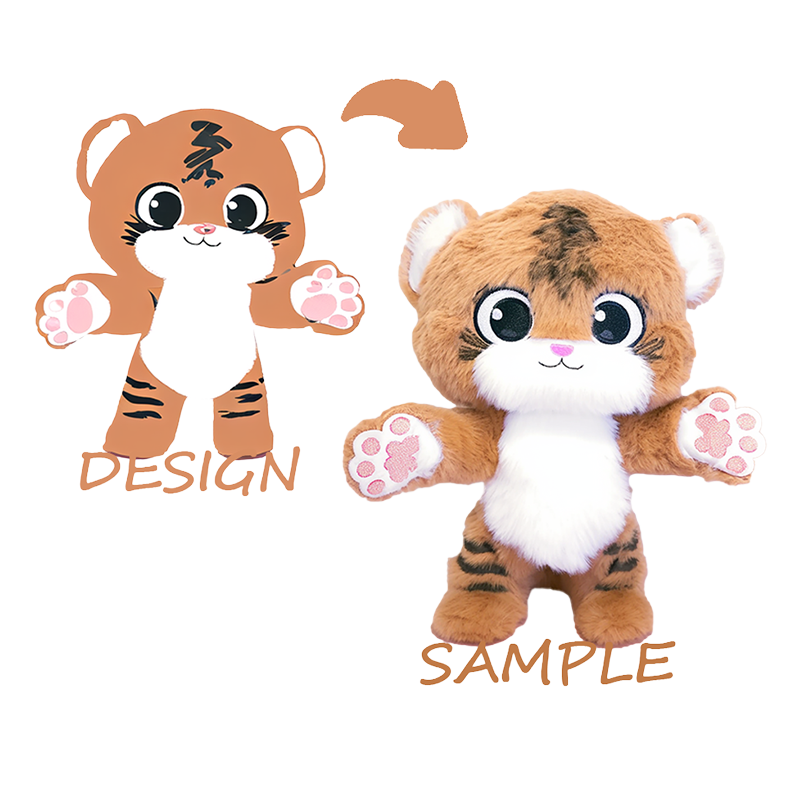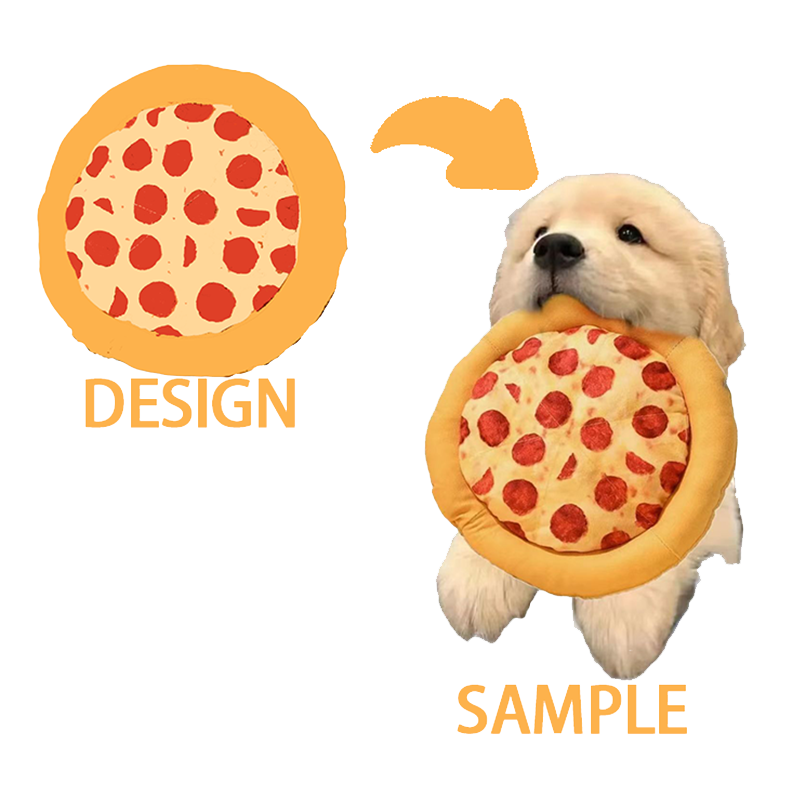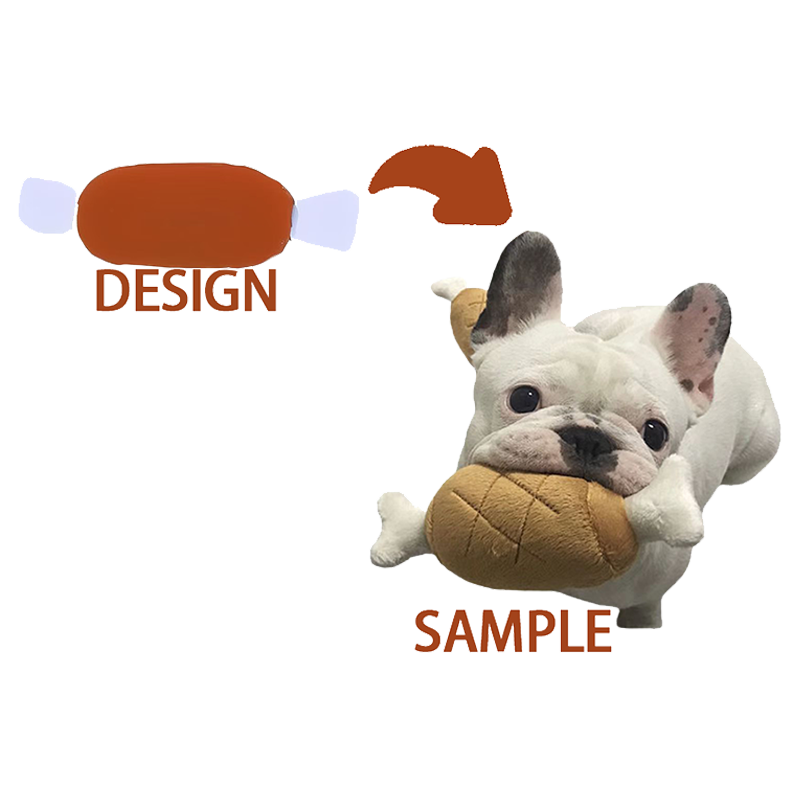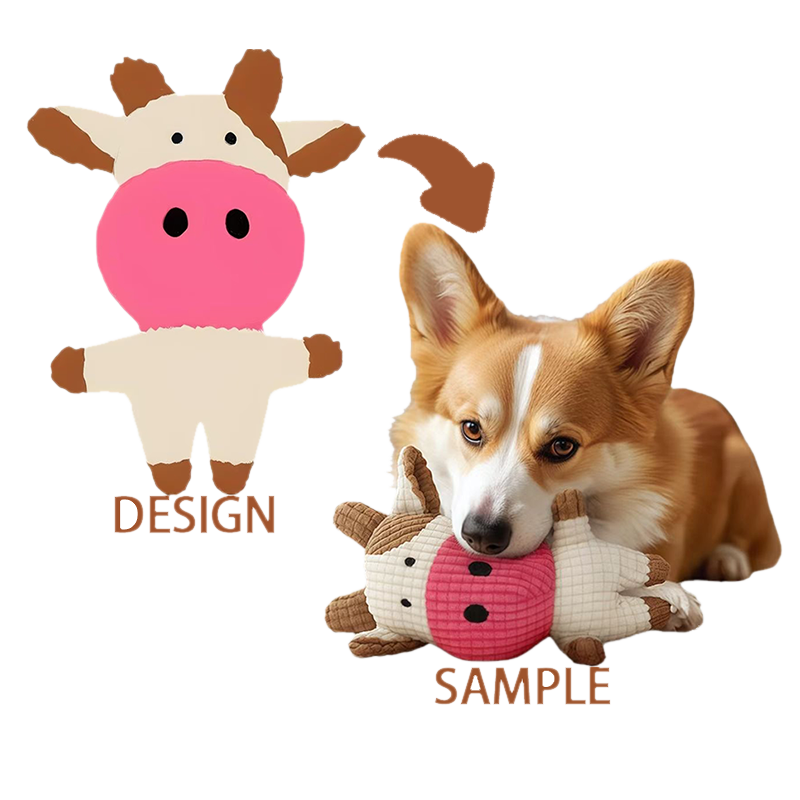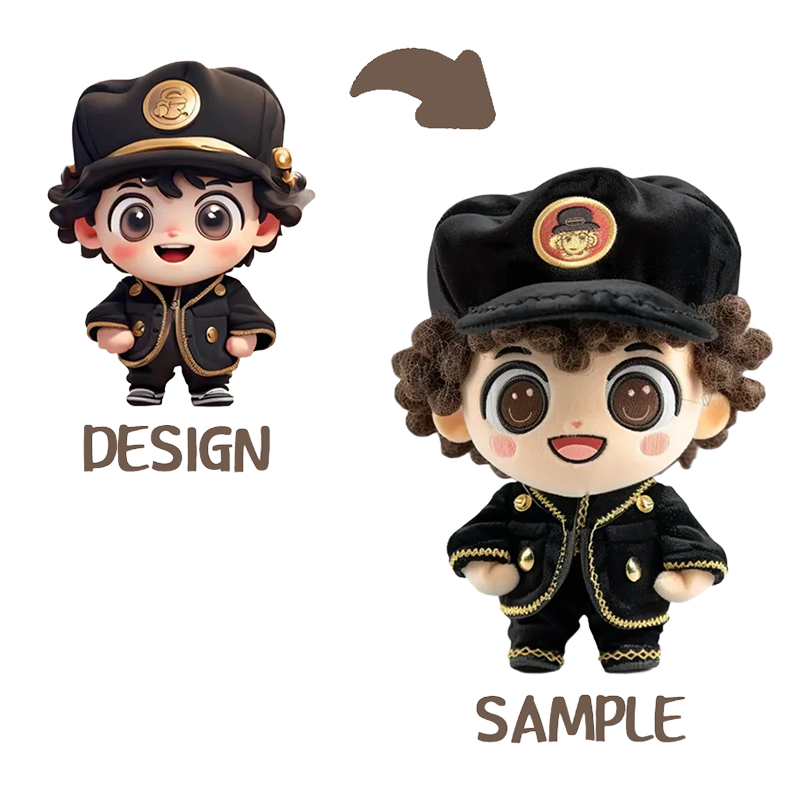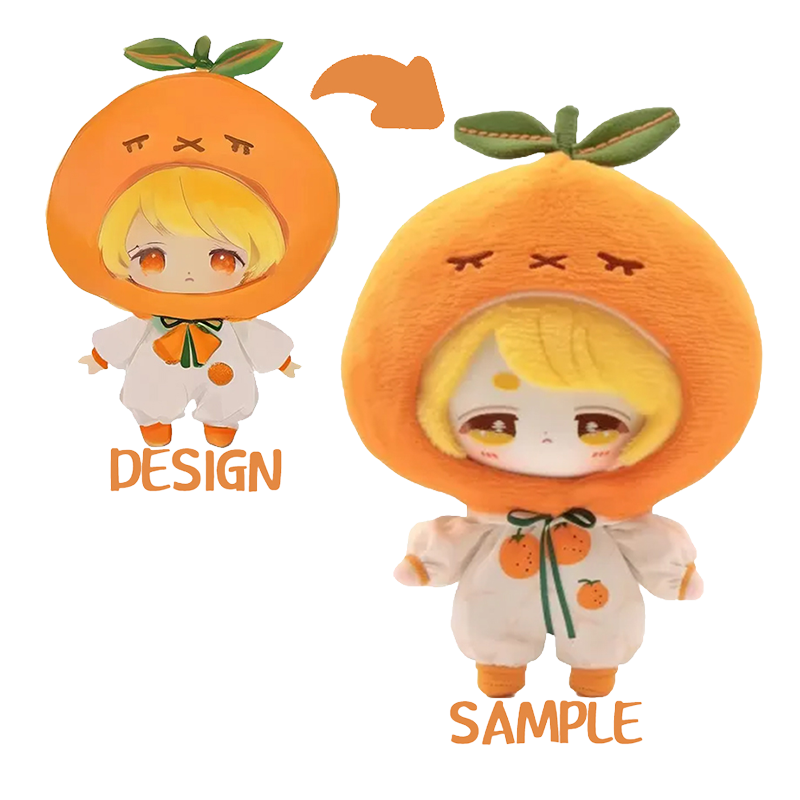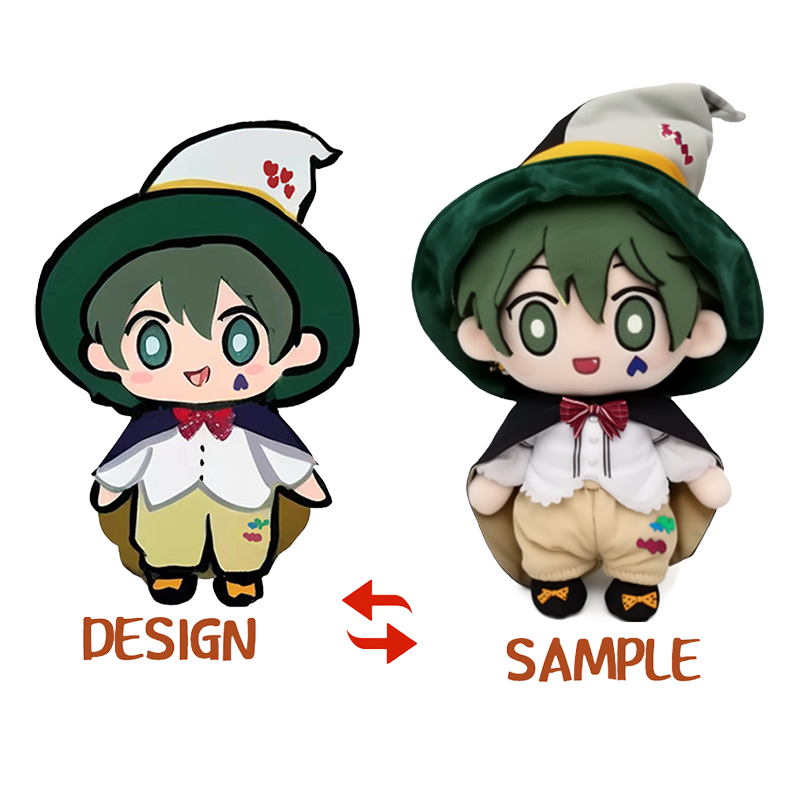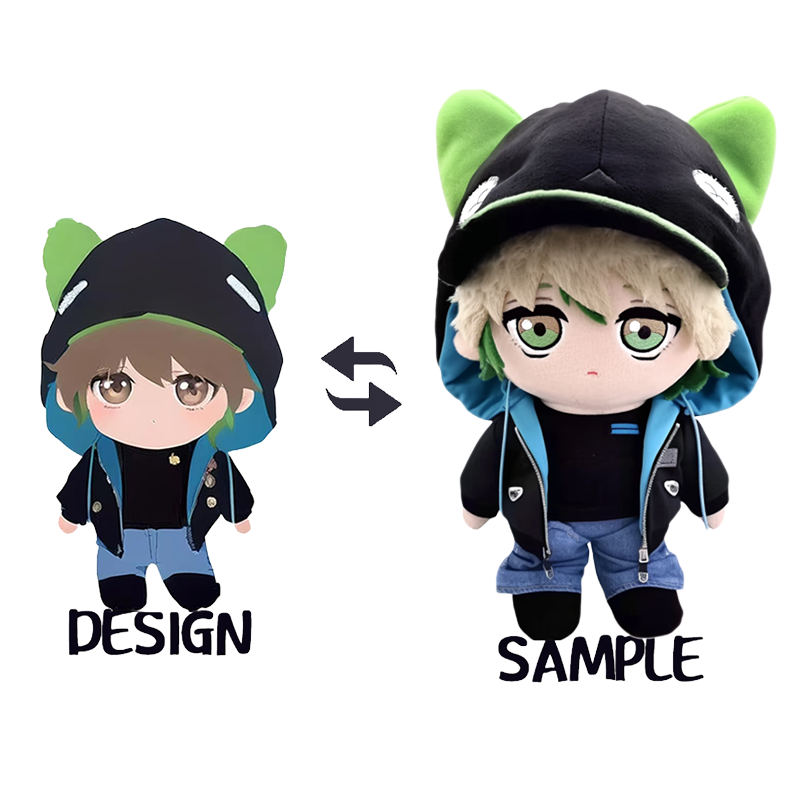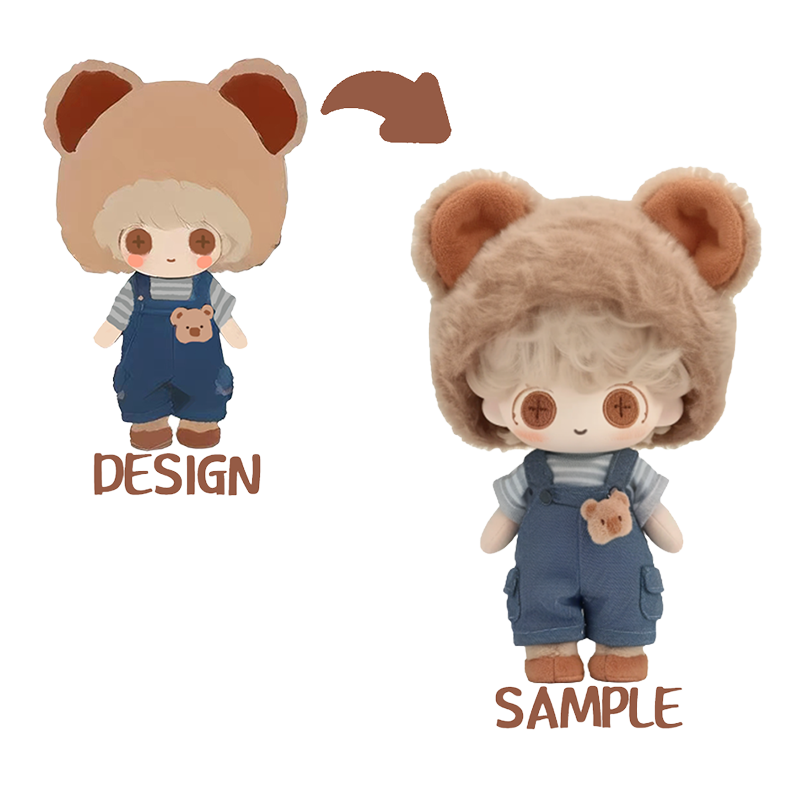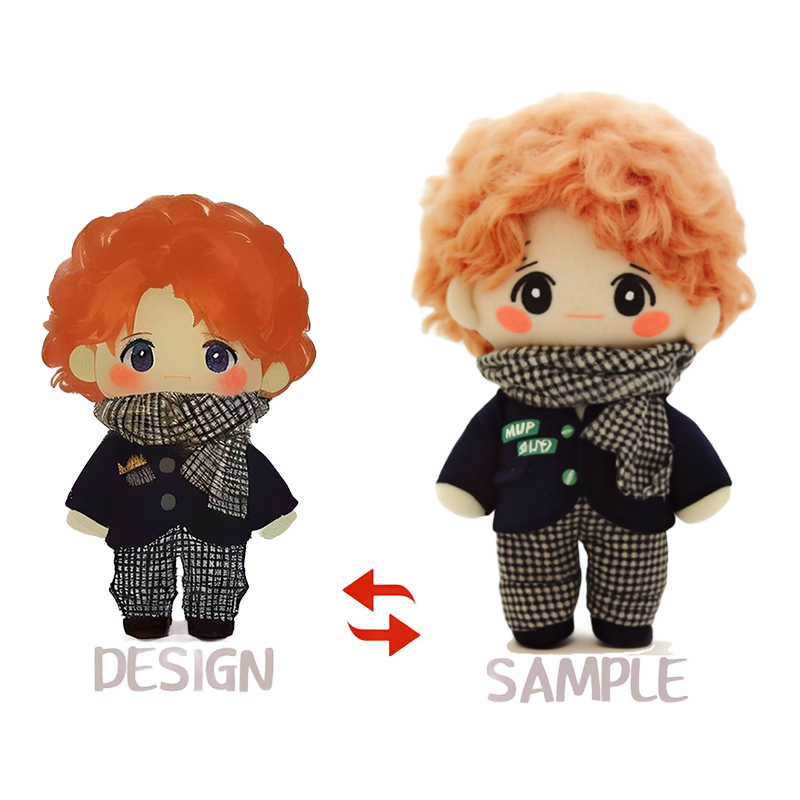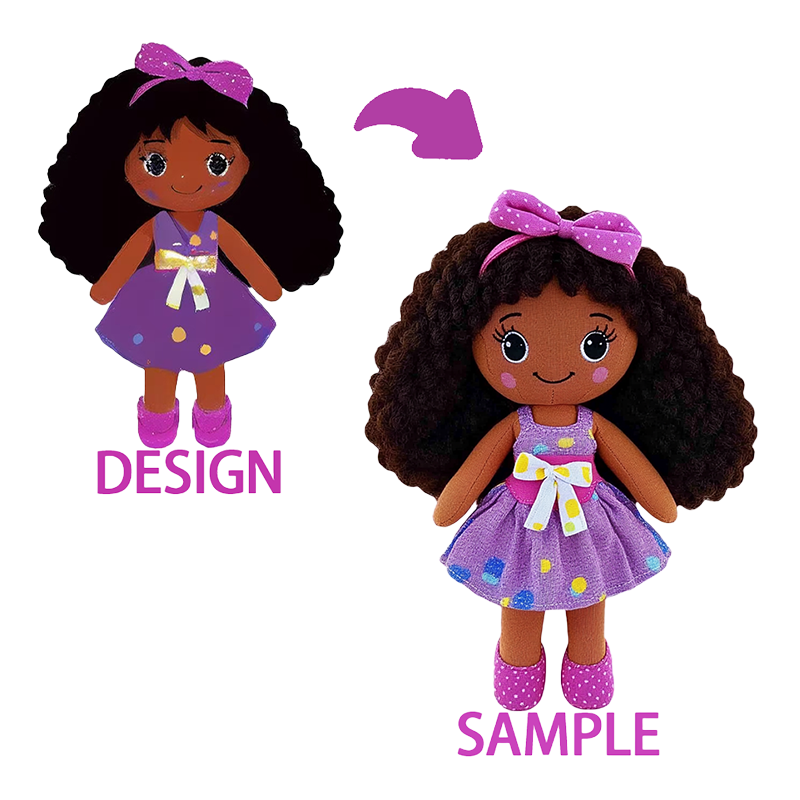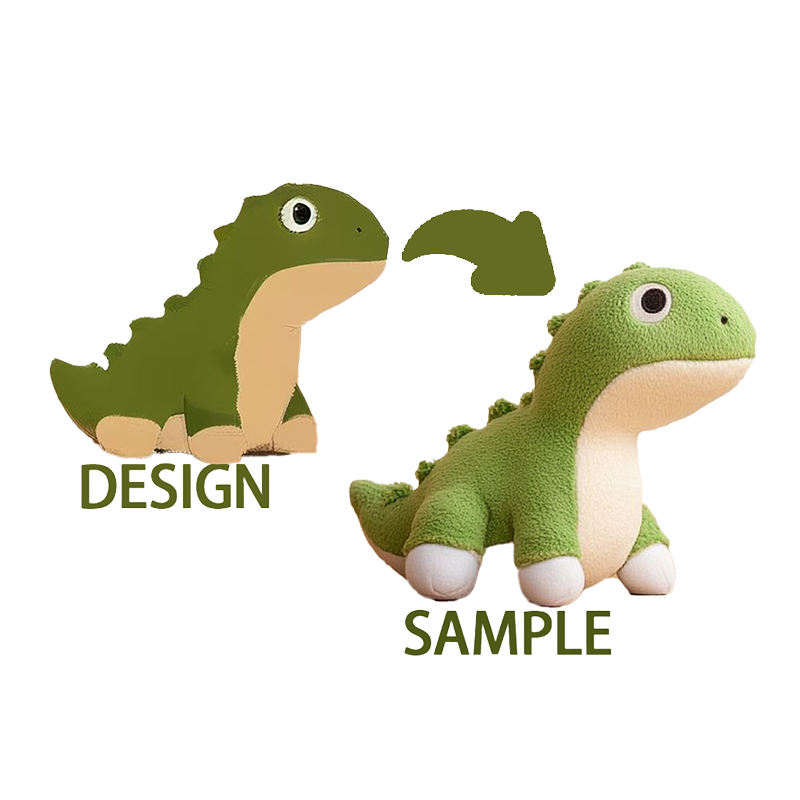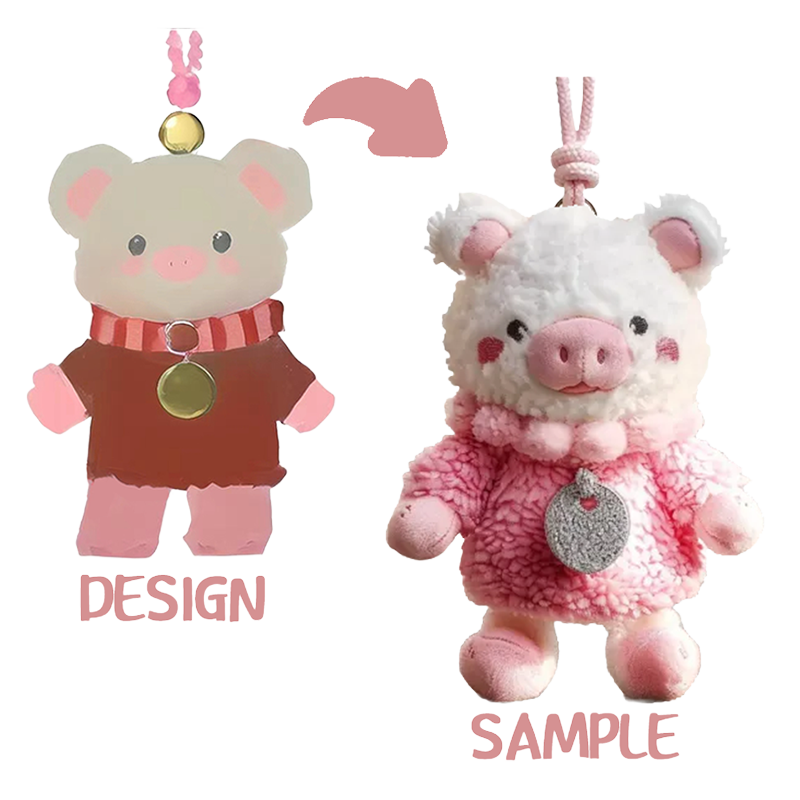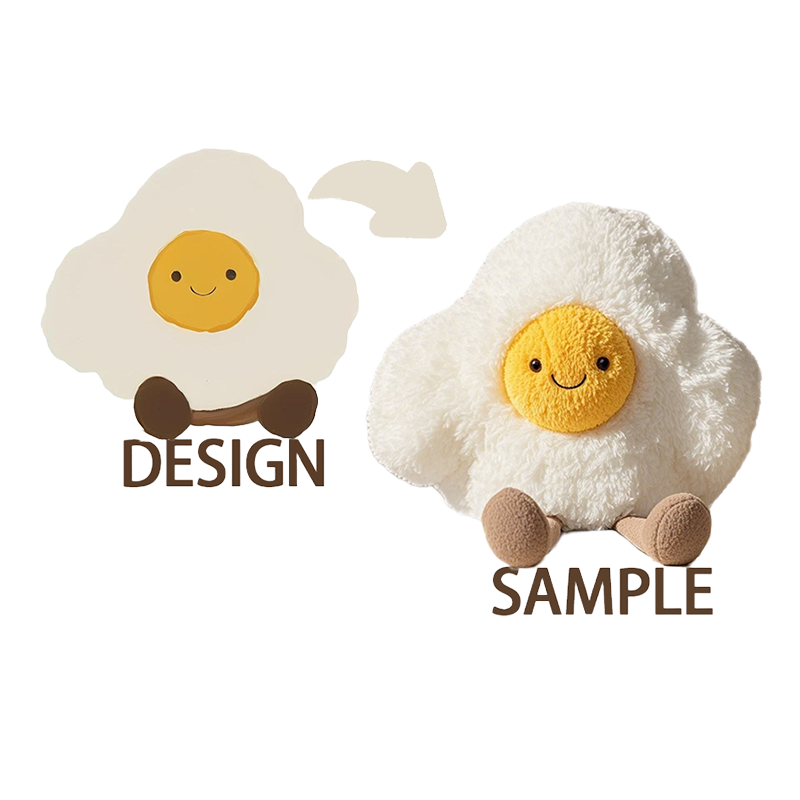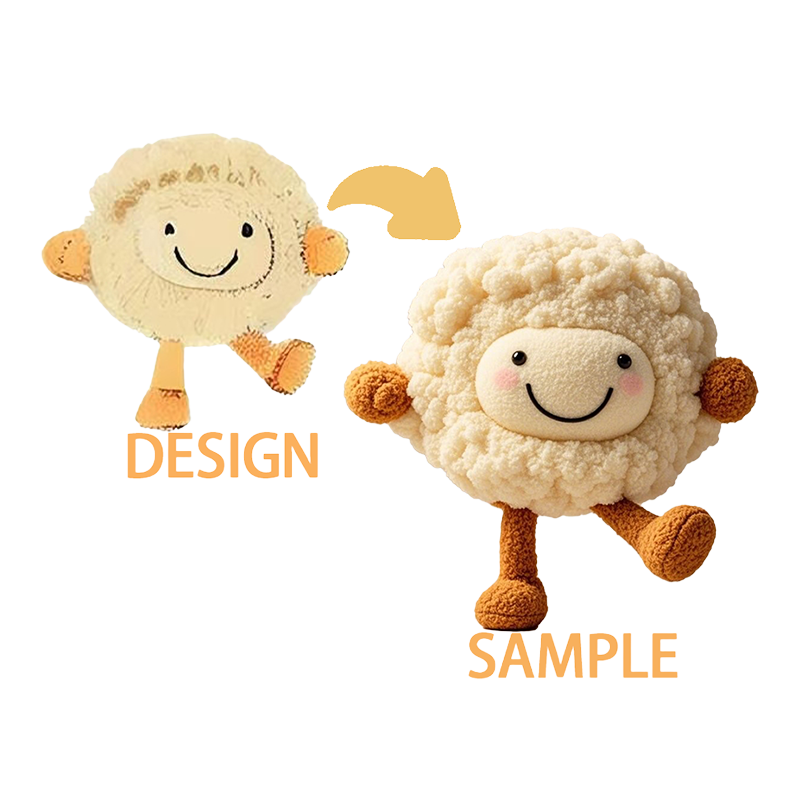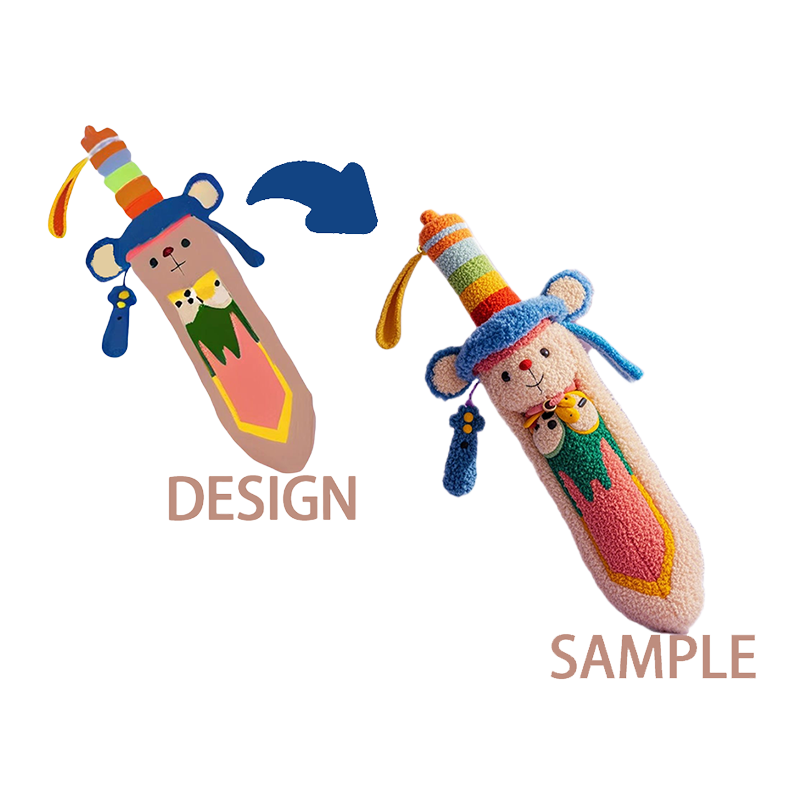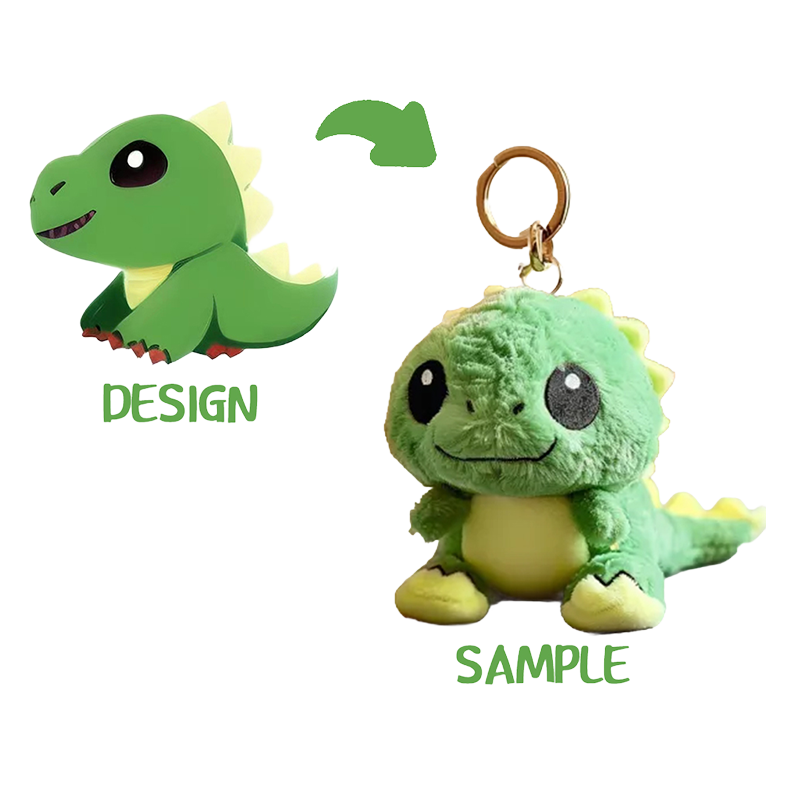Customized plush toys: carriers of personalized emotions
2025-06-16
Content
- 1 1. Advantages of customized plush toys
- 2 2. Characteristics of Customized Plush Toys
- 3 3. The benefits of customized plush toys
- 4 4. A guide to cleaning plush toys: from basic cleaning to special care
- 5 5.Drying and post-care
- 6 6.Precautions and common misunderstandings
- 7 8. The commercial value of customized plush toys
1. Advantages of customized plush toys
The reason why customized plush toys are widely welcomed by everyone is first of all due to their unique personalized customization advantages. In today's market flooded with standardized products, being able to own a plush toy designed completely according to one's own wishes satisfies consumers' desire for uniqueness. From the selection of fabric materials, color matching to the determination of specific toy shapes, every link reflects the owner's personal taste and creative expression. This highly involved design process makes the final product no longer a cold commodity, but a living existence that carries the owner's emotions and stories.
The embodiment of emotional value is another major advantage of customized plush toys. Unlike mass-produced toys, customized plush toys are often associated with specific people, pets or memories. Many people choose to customize plush toys to commemorate their deceased pets, and by accurately restoring the appearance characteristics and expressions of their beloved pets, this emotion can be continued. Similarly, transforming children's graffiti works into real plush toys, or customizing dolls in the image of family members, can create irreplaceable emotional connections. This emotional value transcends the material attributes of the toy itself and becomes an emotional bond to maintain interpersonal relationships.
From the perspective of the practical value of plush toys, customized plush toys have a wide range of application scenarios. In the field of education, customized plush toys can be used as an effective teaching aid to help children understand the world and develop social skills. In terms of psychotherapy, specially designed plush toys can provide emotional support and a sense of security for special groups such as autistic children and anxiety patients. Commercial organizations are also increasingly using customized plush toys as corporate mascots or promotional gifts to enhance brand recognition with unique images. This versatility has greatly expanded the market space for customized plush toys.
Custom plush toys allow consumers to personalize their designs:
|
Custom dimensions |
Optional range |
Special options |
Applicable scenarios |
|
Appearance design |
Provide basic shape by yourself |
3D scan real person/pet |
Memorial gift |
|
Fabric materials |
30+ materials |
Organic cotton/memory foam |
Baby products |
|
Color matching |
Full color spectrum selection |
Gradient color/pattern customization |
Brand peripherals |
|
Size specification |
10cm-200cm |
Scale proportionally |
Collection display |
|
Packaging design |
Gift box packaging |
Engraving service/video greeting card |
Proposal gift |
2. Characteristics of Customized Plush Toys
The characteristic of customized plush toys is that they are highly customizable. Consumers can choose a variety of materials from traditional to innovative according to their personal preferences, such as environmentally friendly fabrics such as organic cotton and bamboo fiber, or materials with special functions such as temperature-sensitive color change and luminous. There are even more possibilities in the design of toys. Whether it is to restore the real image or to visualize the imaginary creatures, professional designers can realize it through exquisite craftsmanship. This degree of freedom makes each work a unique work of art.
The diversity of craftsmanship is another feature of customized plush toys. Traditional hand-sewing techniques are combined with modern digital technology to create unprecedented fineness and expressiveness. 3D modeling technology can accurately capture prototype features, computer embroidery can present complex pattern details, and cutting technology ensures the precise molding of each component. At the same time, some studios still retain pure hand-made methods, impressing consumers who pursue simple aesthetics with the warmth of the stitches. This diversified process selection meets the market needs at different levels.

Customized plush toys also show obvious cultural integration characteristics. The production processes and aesthetic preferences of different regions intersect and collide in this field. Elements such as Chinese silk embroidery, European lace decoration, and African bright colors may appear in the same work. This cultural inclusiveness not only enriches the product form, but also makes customized plush toys a carrier of cross-cultural communication. Many consumers deliberately choose designs that incorporate exotic cultural elements to express their appreciation and respect for diverse cultures.
High personalization is the most prominent feature of customized plush toys. From the initial design concept to the final product, every link is integrated with the creativity and intentions of the customizer. Consumers can freely choose the fabric material, whether it is skin-friendly organic cotton, luxurious lambskin, or warm fabric with special functions; they can decide the shape of the toy, from cute cartoon images to realistic replica shapes; they can also add exclusive personalized elements, such as embroidered names, commemorative dates or special decorative accessories. This deep sense of participation makes each work unique. As one customizer said: "This is not buying a commodity, but creating a living partner."
3. The benefits of customized plush toys
From an emotional and psychological perspective, customized plush toys have significant healing effects. Studies have shown that hugging plush toys can stimulate the body to secrete oxytocin, a "hug hormone" that helps relieve stress and improve mood. For individuals who have experienced trauma or lost a loved one, specially designed commemorative plush toys can be a safe object for emotional transition. Child psychologists point out that customizing plush toys with familiar images can help children build a sense of security and promote the development of emotional expression. Among the elderly, customized plush toys with nostalgic themes have also been shown to evoke positive memories and reduce loneliness.
In the field of education and development, customized plush toys show unique value. Educators have found that when the learning content is visualized through customized plush toys, children's participation and memory retention rate are significantly improved. For example, designing letters or numbers into cute plush images can make early education more interesting. Specially shaped plush toys can also help children understand abstract concepts, such as using emotional monster toys of different colors to teach emotional management. For children with developmental disabilities, customized sensory plush toys can provide tactile stimulation and assist in the development of perceptual abilities.
From the perspective of environmental protection and sustainability, customized plush toys have more advantages than mass production. The customized model avoids the waste of resources caused by overproduction, and consumers usually cherish tailor-made products more and extend their service life. Many custom studios use environmentally friendly fabrics such as recyclable materials or organic cotton, and provide repair services to reduce waste. Some innovative companies have even launched "plush toy recycling" services, transforming old clothes into commemorative dolls to achieve resource recycling. This environmental protection concept is attracting more and more eco-conscious consumers.

4. A guide to cleaning plush toys: from basic cleaning to special care
Ø Preparation before Cleaning
A careful inspection is the first step that cannot be ignored in the cleaning process of plush toys. Each plush toy is usually sewn with a washing label, which clearly marks the material composition and cleaning instructions, and must be strictly followed. Pay special attention to whether the label is marked with restrictive instructions such as "Do not wash" or "Surface wipe only", which directly determines the choice of subsequent cleaning methods. For toys that are old or the labels have fallen off, it is recommended to give priority to the most conservative cleaning methods, such as dry cleaning or surface wiping, to avoid irreversible damage.
Common label symbols and their meanings are as follows:
|
Label symbol |
Cleaning instructions |
|
Machine washable |
Machine washable (below 30°C) |
|
Not washable |
Dry clean or wipe only |
|
Hand wash |
Need to wash by hand |
|
Do not bleach |
Do not use bleach |
It is also crucial to understand the internal structure of the toy. Gently press various parts of the toy with your hands to check whether there are electronic components (such as music boxes, light-emitting devices), special fillings (such as bean shells, foam particles) or decorative parts that are easy to fall off. These special structures often mean that traditional washing methods are not feasible - electronic components will be damaged when exposed to water, natural fillings such as bean shells may become moldy and deteriorate after soaking, and decorative parts bonded with glue (such as plastic eyes, sequins) are easy to fall off under the impact of water flow. For this type of toys, the removable electronic components must be removed before local cleaning.
Preparing the right cleaning tools according to the degree of contamination and characteristics of the toy is half the battle. For ordinary dust, a soft brush, vacuum cleaner or lint roller will do the job; for stubborn stains, you need to prepare decontamination materials such as neutral detergent, baking soda or white vinegar. The choice of water quality should not be ignored. Warm water at 30-40℃ is suitable for most plush toys. Too high a temperature may cause shrinkage and deformation, while too cold will affect the cleaning effect. At the same time, prepare auxiliary tools such as laundry bags (for machine washing protection), clean towels (for absorbing water) and combs (for tidying up the fluff).
Safety considerations should be taken into account throughout the preparation work. Avoid using strong detergents containing fluorescent agents and bleaching ingredients. These chemicals may not only damage the toy material, but the residues may also pose a threat to the health of children who often come into contact with the toys. It is recommended to choose infant-specific or neutral detergents, which ensure safety while removing dirt. For families with members with allergies, special attention should be paid to whether the detergent contains fragrances or additives that may trigger allergies.
Ø Basic cleaning methods
Hand washing is the most gentle and widely applicable way to clean plush toys, especially for delicate, valuable or old plush toys. In actual operation, pour 30-40℃ warm water into the container, add an appropriate amount of neutral detergent and stir until fully dissolved to form a uniform washing solution. Immerse the toy completely in the solution, and let the detergent penetrate deep into the fiber by gently pressing rather than rubbing. This process can last for about 5-10 minutes. For areas with concentrated stains, you can use a soft brush to dip the foam for targeted treatment. Be careful to keep the brush moist but not dripping too much water to avoid excessive penetration of water into the filling layer. The rinsing step is particularly critical. It is necessary to change the water several times until there is no foam residue. If the detergent is not cleaned thoroughly, it will not only cause the toy to harden, but may also cause skin allergies. Avoid violent wringing when dehydrating. The correct way is to wrap the toy with a clean towel and gently press to absorb the moisture, or put it in a laundry bag and use a washing machine to dehydrate for 5-10 seconds.
Machine washing provides a convenient way to clean large or durable plush toys, but the operating procedures must be strictly followed to ensure safety. Only toys clearly marked "machine washable" can be used in this method. Toys must be placed in a laundry bag before machine washing, which can effectively prevent seams from cracking or decorations from falling off due to pulling during the washing process. Choose the "gentle" or "wool" program of the washing machine, control the water temperature below 30°C, and avoid using softeners and bleach, which will destroy the softness of the fluff and may irritate the skin. It is worth noting that old-fashioned washing machines with agitator columns are very likely to cause stuffing to shift, so they should be avoided as much as possible; front-loading washing machines are relatively gentle and are a more ideal choice. Toys should be removed immediately after washing to prevent bacteria from growing in water for a long time.
Dry cleaning technology provides a solution for plush toys that cannot be exposed to water. The coarse salt adsorption method is an economical and practical home dry cleaning method: put the toy and coarse salt (or baking soda) into a large sealed bag, shake it vigorously for 5-10 minutes, and the salt particles will remove dust and some oil stains through physical friction and adsorption. Finally, pour out the blackened salt particles. This method is particularly suitable for large toys or situations where surface cleaning is required frequently. For expensive toys or complex stains, professional dry cleaning is a more reliable choice - dry cleaners use special solvents and processes to remove deep dirt without contact with water while maintaining the shape and texture of the toy. Home dry cleaning can also use a special dry cleaning spray, spray it and wipe it with a slightly damp cloth, but you need to test it in a hidden place first to see if it will fade.
Surface cleaning is between deep cleaning and daily care, suitable for local stains or regular maintenance. Basic surface cleaning only requires a damp cloth (wrung to a stop) dipped in a diluted neutral detergent, gently wiping the contaminated area, then wiping with clean water to remove residue, and finally blotting with a dry cloth. Different types of stubborn stains require special treatment: oily stains can be removed by sprinkling a small amount of baking soda on them and letting them sit, then brushing them off; mildew stains can be gently wiped with diluted white vinegar; blood stains can be treated with cold water and salt; and ink stains can be carefully wiped with an alcohol cotton ball. No matter what kind of stain you are dealing with, you should follow the principle of "from the outside in" to prevent the stain from spreading, and dry the area as soon as possible after treatment.
5.Drying and post-care
Scientific drying is the key to ensuring that plush toys maintain their shape and texture after cleaning. Natural drying is the most recommended method. Lay the toys flat in a well-ventilated, cool place to avoid direct sunlight that may cause fading or hardening of the material. For large toys, they can be turned over regularly to ensure that all parts are evenly dried; small toys can be placed in a laundry bag and hung to dry to prevent the toys from deforming. Do not use hot air to dry directly. High temperature will melt the chemical fiber fluff and accelerate the aging of the glue, causing the parts to fall off. During the drying process, you can gently pat the toys every few hours and adjust the distribution of the fillings to help restore the original shape. If the environment is humid, you can use a dehumidifier or air conditioner to assist in drying to prevent the internal fillings from growing mold due to humidity.
Hair care is essential to keep plush toys fluffy and beautiful. After the toy is completely dry, use a wide-tooth comb or a special brush to gently comb along the direction of the fluff growth. Do not forcefully pull the knots you encounter. You should first gently separate them by hand before combing. Do not use ordinary plastic combs for plush toys. Choose wig combs or wooden combs to reduce static electricity and hair damage. For areas where hair is flattened due to washing, gently rub it with your hands to make it fluffy, or use a hair dryer in cold air mode to blow it from a distance. Toys made of special materials (such as wool or lambskin) may need to use specific hair care sprays to restore their soft touch.
Deep disinfection is very important in certain situations, especially when the toys have been used by patients or have been in an unclean environment for a long time. The ultraviolet rays in the sun are natural disinfectants. Placing the toys outdoors for 2-3 hours in clear weather can effectively kill most bacteria and mites. For toys that cannot be exposed to the sun, a steam hanging iron can be used to maintain an appropriate distance for steam disinfection, but the heat resistance of the material must be tested in an inconspicuous place first. Professional disinfection can also be irradiated with ultraviolet disinfection lamps, which is safe and residue-free for all materials. Unless there are special circumstances, avoid using chemical disinfectants when cleaning toys. Chemical disinfectants may cause potential harm to children's health if they are not completely cleaned.
Daily maintenance can extend the cleaning interval and service life of plush toys. Establish a regular dust removal habit, and use a soft-bristled vacuum cleaner or a sticky roller to clean the surface dust every week to prevent dirt accumulation. The use environment also directly affects the cleaning frequency of toys - try to keep toys away from easily contaminated areas such as dining tables and kitchens, and educate children not to bring toys into the bathroom or dirty places outdoors. When storing, choose a breathable storage box or mesh bag, put in moisture-proof agents and insect repellent spices to avoid mildew caused by humid environments. For toys with special sentimental value, consider customizing protective covers or display boxes to reduce dust accumulation without affecting viewing and occasional use.
Special materials and stain treatment
Electronic component toys need to be cleaned with extra caution. These toys usually have built-in sound devices, light-emitting components or motion mechanisms, and water washing may cause circuit short circuits and permanent damage. Before cleaning, you must remove the battery or disconnect the power supply, then wipe the surface with a slightly damp cloth. Be especially careful around electronic components and only wipe lightly with a dry cloth. For toys with non-detachable electronic components, the "dry cleaning powder" cleaning method can be used: put the toy in a large bag, add special dry cleaning powder, seal it and shake it gently to let the powder absorb dirt. After cleaning, make sure all parts are completely dry before reinstalling the battery to avoid residual moisture damaging the circuit. It is recommended to use ultraviolet light irradiation to disinfect this type of toys, which is both safe and effective.
Different materials require targeted cleaning strategies. Plush toys (such as teddy bears) are very easy to hide dirt and the hair is easy to tangle after washing. Machine washing should be avoided. When hand washing, gently brush in the direction of the hair and comb continuously during the drying process. Short plush or polyester fiber toys are relatively durable. Most of them can be machine washed, but they need to be put into a laundry bag and select the gentle program. Velvet materials can only be gently wiped along the texture with a soft cloth dipped in diluted silk and wool detergent. Washing with water will cause the fluff to fall down and lose its luster. Toys decorated with leather or suede should never be soaked. They can only be treated locally with special detergents. For natural materials such as wool, use a pH-neutral wool detergent, hand wash in cold water, and lay flat to dry to prevent stretching and deformation.
Removing stubborn stains requires "treating the symptoms". Oily stains (such as cooking oil and lipstick) can be sprinkled with corn starch or baking soda and left to stand for several hours to absorb the grease, and then use a soft brush to remove the powder. Pigment stains such as juice and tea stains should be rinsed immediately with cold water, and then diluted white vinegar or oxygen bleach (only for white toys) solution should be applied. Blood stains need to be treated with cold water and salt, and hot water will make the protein coagulate and more difficult to remove. Mold stains are a common problem in humid environments. They can be gently wiped with diluted alcohol or white vinegar. Severe cases may require professional treatment. When chewing gum is sticky, do not pull it hard. It should be frozen with ice cubes to make it brittle, and then carefully scraped off. No matter what kind of stain you are dealing with, you should first test whether the stain remover will cause fading or damage in a hidden place.
Plush toys over 1 meter long often cannot be put into a home washing machine, and it is difficult to clean and dry them thoroughly by hand washing. In this regard, a vacuum cleaner with a soft-bristled brush is the best daily cleaning tool, which can effectively remove surface and deep dust. Local stains can be sprayed with foam detergent, then gently wiped with a slightly damp sponge in a circular motion, and finally dried with a dry cloth. For deep cleaning, the toy can be laid flat on a clean waterproof cloth, and washed in sections with a soft brush and a neutral detergent solution. Excess moisture can be absorbed with a towel at any time, and the fan can be used to accelerate drying. For extra-large toys (such as those over 2 meters), industrial-grade equipment in professional laundry shops may be the only viable cleaning option.
Material cleaning method comparison table:
|
Material Type |
Recommended Cleaning Method |
Drying Method |
Precautions |
|
Ordinary short plush |
Machine wash (gentle cycle) |
Dry in the shade + comb |
Put in a laundry bag |
|
Plush/lambskin |
Hand wash + dry cleaning powder |
Lay flat and dry in the shade |
Comb in the direction of the hair |
|
Velvet |
Professional dry cleaning |
Dry in a ventilated place |
Avoid washing with water |
|
Contains electronic components |
Wipe the surface |
Dry naturally |
Remove the battery first |
|
Wool/natural fiber |
Hand wash with neutral detergent |
Lay flat for shaping |
No wringing |
6.Precautions and common misunderstandings
Health risks should not be ignored during the cleaning process of plush toys. Newly purchased toys may contain harmful substances such as formaldehyde, and should be fully aired or washed before first use. The choice of detergent is directly related to the health of the user. The fluorescent brighteners and strong surfactants in ordinary laundry detergents may enter the children's body through skin contact or oral cavity. Be sure to use detergents for infants and young children without additives. Avoid using chlorine bleach and phenol disinfectants during disinfection. The residues of these substances may cause allergies or respiratory irritation. Especially for children, it is recommended to rinse repeatedly after washing and fully air dry in the sun to minimize chemical residues. Toys should not be given to children before they are completely dry. Moisture and mites are very likely to breed in a humid environment, which may cause allergic diseases.
Common misunderstandings often lead to irreversible damage to plush toys. The first misunderstanding is that "all plush toys can be machine washed". In fact, the strong mechanical action of the washing machine can cause the filling to shift, the seams to crack, and the decorations to fall off. Only toys that are clearly marked "machine washable" and have simple structures are suitable for this method. Another common mistake is "the longer the soaking time, the cleaner it is". Excessive soaking will cause the filling to clump and the glue to dissolve, especially natural fillings such as bean shells and straw will mold and deteriorate when exposed to water. "Direct sunlight can dry quickly" is also a misunderstanding. Although ultraviolet rays can disinfect, they will cause fading and aging of the material. A cool and ventilated place is the ideal drying place. Many people are accustomed to using a hair dryer to dry quickly with hot air, which can easily melt and deform synthetic fibers. If you must use it, keep a distance of more than 30cm and use cold air.
The frequency of cleaning needs to be scientifically arranged according to actual conditions. Excessive cleaning will shorten the life of toys, but insufficient cleaning will pose a health hazard. It is generally recommended to deep clean once every 3-6 months, but the frequency needs to be increased in the following situations: toys that are often chewed by infants and young children (once a month), toys used by children with allergic constitutions (once every 2-3 months), and toys played with pets (depending on the degree of pollution). You can judge whether it needs to be cleaned by "smelling" (whether there is a peculiar smell), "looking" (whether it is obviously dirty), and "shooting" (whether it is dusty). It is worth noting that for antique toys or valuable collectibles with commemorative significance, professional conservation personnel should be consulted before cleaning, as improper handling may lead to a significant reduction in value.
Emergency treatment is essential for special situations. When a toy is contaminated with vomit or excrement, the solid residue should be removed immediately, then the contaminated area should be rinsed with cold water, and then locally treated with an enzyme detergent (such as diaper detergent), and finally the entire toy should be cleaned. When a drink is spilled, press (not wipe) with an absorbent cloth to absorb the liquid as soon as possible to prevent penetration into the deep layer. If the toy is accidentally completely soaked in water (such as falling into a swimming pool), the water should be drained as much as possible, then wrapped with a towel and pressed to absorb water, and dried with an electric fan to accelerate drying. If necessary, some of the fillings can be removed to prevent internal mildew. For toys that have become hard or deformed due to improper cleaning, try steam fumigation and then gently comb them, or put a few clean tennis balls in when drying to help restore the fluffiness.
Professional treatment methods for different stain types:
|
Stain Type |
Emergency Treatment |
Deep Cleaning |
Prohibited Methods |
|
Oil stains |
Sprinkle corn starch to absorb |
Local treatment with detergent |
Rinse with hot water |
|
Juice/tea stains |
Cold water rinse |
Oxygen bleach wash |
Chlorine bleach |
|
Blood stains |
Cold water + salt soak |
Enzyme detergent |
Hot water |
|
Ink stains |
Alcohol cotton swab |
Special stain remover |
Wipe large areas |
|
Mildew spots |
Dry in the sun |
Wipe with white vinegar solution |
Soak in water |
7.Common QA
After cleaning, you must ensure that the toys are completely dry before giving them to your child to play with
Check the seams regularly for cracks to prevent the filling from being exposed
Damaged toys should be repaired or discarded immediately
Newborn toys should pay extra attention to cleaning standards
Frequently Asked Questions:
Q: What if the toys become hard after washing?
A: Try the following methods:
Steam fumigation and gentle combing
Put in tennis balls to dry to restore fluffyness
Use hair softener (for infants and young children only)
Q: How to prevent toys from yellowing?
A: Preventive measures include:
Avoid direct sunlight
Clean regularly to prevent stains from settling
Wrap in acid-free paper when storing
Q: What is the appropriate cleaning frequency?
A: Reference standard:
Toys that are frequently chewed: once every 2 weeks
Toys that accompany the bed: once a month
Toys for display: once a season
The commercial value of customized plush toys
8. The commercial value of customized plush toys
In the context of today's consumption upgrade, customized plush toys have evolved from simple children's toys to a market with huge commercial value. This product form that combines emotional value and personalized experience is reshaping the business model and profit logic of the traditional plush toy industry.
From the perspective of market data, the customized plush toy industry has maintained a high double-digit growth, which is much higher than the growth rate of the traditional toy market. Behind this growth trend is a profound change in consumer demand - modern consumers are no longer satisfied with the same standardized products, but are willing to pay a premium for uniqueness and emotional value. The survey shows that nearly 80% of consumers accept a 30%-50% price increase, and uniqueness has surpassed price to become the primary factor in purchasing decisions.
Customized plush toys create multi-dimensional commercial value. At the product level, customized services have built a significant differentiated competitive advantage. Through the on-demand production model, the company not only achieved a high gross profit margin of more than 65%, but also greatly optimized the inventory structure, increasing turnover efficiency by three times. This flexible supply chain model effectively solves the pain point of inventory backlog in the traditional toy industry.
For brand building, customized services have become a powerful enabling tool. Data shows that the brand memory of customized users is 26 percentage points higher than that of ordinary users. Each customized product can trigger more than three social communications on average. This self-propagation effect greatly reduces the cost of acquiring customers. More importantly, the repurchase rate of customized customers reaches 45%, forming sustainable user value.
Channel innovation is another important value dimension. The customization model is naturally suitable for DTC (direct-to-consumer) sales, and the brand's official website traffic has been significantly improved. The sales per square meter of offline customization counters is three times that of traditional counters, creating a new retail experience. Cross-border cooperation with wedding, maternal and child and other scenarios has also opened up a high-profit incremental market.
The deeper business value lies in the accumulation of user data. The data such as design preferences and emotional needs accumulated during the customization process not only guides the direction of product innovation, but also derives multiple realization paths such as precision marketing and value-added services. These data assets are becoming the core competitiveness of enterprises.
In terms of business model innovation, layered customization services meet the needs of customers with different consumption capabilities. Basic customization services cover the mass market, advanced customization targets quality people, and limited master handmade services serve high-end collection needs. Value-added services such as smart modules and digital certificates further expand the profit space. Customized solutions for enterprises have opened up the B-end market, and the demand for brand mascots, event gifts, etc. continues to grow.
- Changes in consumer behavior
Modern consumers' perception of customized plush toys has undergone a fundamental change-
Acceptance of emotional premium: 78% of consumers are willing to pay a 30%-50% premium for emotional value
Changes in decision-making factors: Uniqueness (43%) surpasses price (28%) to become the primary consideration
Purchase scenario expansion: from holiday gifts (52%) to self-rewards (23%) and home decoration (18%)
- Product differentiation value
Competitive barriers created by customized services have been significantly improved-
Premium ability: the average gross profit margin of customized products is 65%, far exceeding the 40% of standard products
SKU efficiency: 1 customization platform can replace the display needs of traditional 100+ standard SKUs
Inventory optimization: on-demand production model increases inventory turnover by 300%
- Brand empowerment value
Customized services become a strategic lever for brand building——
Improved memory: customized users’ brand recall reaches 68%, higher than ordinary users’ 42%
Social communication: Each customized product triggers an average of 3.2 social shares
User stickiness: The repurchase rate of customized customers is 45%, 2.5 times that of non-customized customers
We specialize in the design and production of plush toys to provide customers with unique customized services

 English
English 中文简体
中文简体